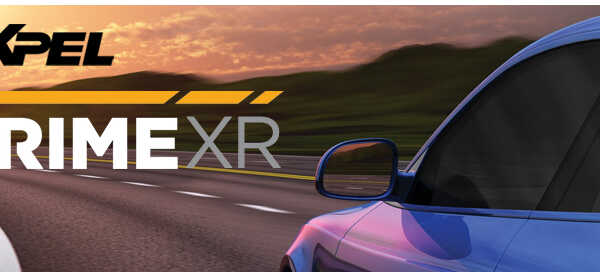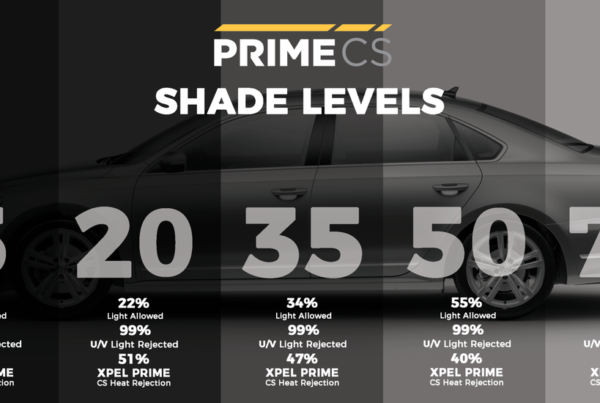Window Tint Laws in Ontario and Why They Matter

When it comes to car customization, one popular option is window tinting. Window tinting offers a range of benefits, including privacy, protection from UV rays, and enhanced aesthetics. However, before getting your car windows tinted in Ontario, it’s crucial to understand the legalities surrounding this modification. Ontario, Canada’s most populous province, has specific regulations regarding window tinting. In this article, we will explore Ontario’s current window tint laws and restrictions, exceptions to these rules, penalties for non-compliance, and provide guidance on how to ensure compliance.
Ontario tint laws:
Explanation of Ontario’s current window tint laws and restrictions
In Ontario, the Highway Traffic Act governs the rules and regulations for window tinting. According to the Act, it is illegal to have window tinting that obstructs the driver’s view. The front windshield, specifically, must have a minimal level of tinting that does not impede visibility. The tint applied to the front side windows must also allow a minimum of 70% light transmission. This means that at least 70% of light must pass through the window.
For rear side windows and the rear windshield, there are no specific limits on tint darkness. However, the law states that the vehicle must have dual side mirrors if any rear windows are tinted. These mirrors compensate for reduced visibility caused by darker tints. It is important to note that reflective or mirrored tints are strictly prohibited on all windows.
Exceptions:
Circumstances where tint exemptions may apply, such as medical or law enforcement purposes
While Ontario’s window tint laws are generally strict, there are exceptions in certain circumstances. Medical exemptions exist for individuals who require special window tints for medical reasons. These exemptions are granted by the Ministry of Transportation and typically apply to individuals with medical conditions that make them sensitive to sunlight or UV rays. In such cases, the tinting can exceed the standard limits, but it is crucial to obtain the necessary permits and documentation to avoid legal issues.
Law enforcement vehicles, such as police cars or other emergency service vehicles, are also exempt from the window tinting regulations. This exemption is necessary for their operational requirements and safety measures. However, these exemptions are specific to authorized vehicles and do not apply to personal or commercial vehicles.
Penalties for non-compliance:
Consequences of violating Ontario’s window tint laws
Violating Ontario’s window tint laws can result in penalties and fines. Law enforcement agencies are authorized to issue tickets and citations to drivers with illegal window tints. The fines vary depending on the severity of the violation, with penalties ranging from a few hundred dollars up to thousands of dollars. In addition to fines, drivers may also face consequences such as demerit points on their driving records, vehicle inspections, or even having their license suspended.
Furthermore, non-compliant window tints can lead to difficulties during vehicle inspections and licensing processes. When it comes to selling or transferring ownership of a vehicle, improper window tinting can complicate the process and result in delays or rejections.
Recap of Ontario’s window tint laws and how to ensure compliance
In conclusion, it is essential to be aware of and comply with Ontario’s window tint laws if you are considering tinting your car windows. To ensure compliance, it is recommended to consult with a professional car wrapping business, such as It’s a-wrap, that specializes in window tinting. These businesses have the expertise and knowledge to help you choose the appropriate window tint that adheres to the legal requirements in Ontario.
Remember that the front windshield must have minimal tinting that does not obstruct the driver’s view, and the front side windows must allow at least 70% light transmission. Rear side windows and the rear windshield can be tinted as desired, but dual side mirrors are necessary. Avoid reflective or mirrored tints, as they are prohibited on all windows.
If you have a medical condition that requires a special window tint, it is crucial to obtain the necessary permits and documentation from the Ministry of Transportation to ensure compliance.
By understanding and following Ontario’s window tint laws, you can enjoy the benefits of window tinting while staying on the right side of the law.
Want to know more about tinting your cars’ windows? Give our experts at Its A-Wrap a call: (647)-894-8082 or send us an email at [email protected] to learn more about our XPEL Window Tint services in Mississauga, Oakville, Milton and Burlington.

Related Blogs

Seasonal Benefits of Window Tinting: Summer and Winter Advantages

Choosing the Right Window Tint for Your Vehicle: Factors to Consider

DIY Window Tinting vs. Professional Installation: Pros and Cons

How Window Tinting Protects Your Car’s Interior

Window Tint Cost Breakdown

Top 10 Tint Brands In 2025

Can I DIY Tint My Windows?

Explore XPEL’s PRIME series for optimal heat reduction

35% Window Tint





Recent Comments